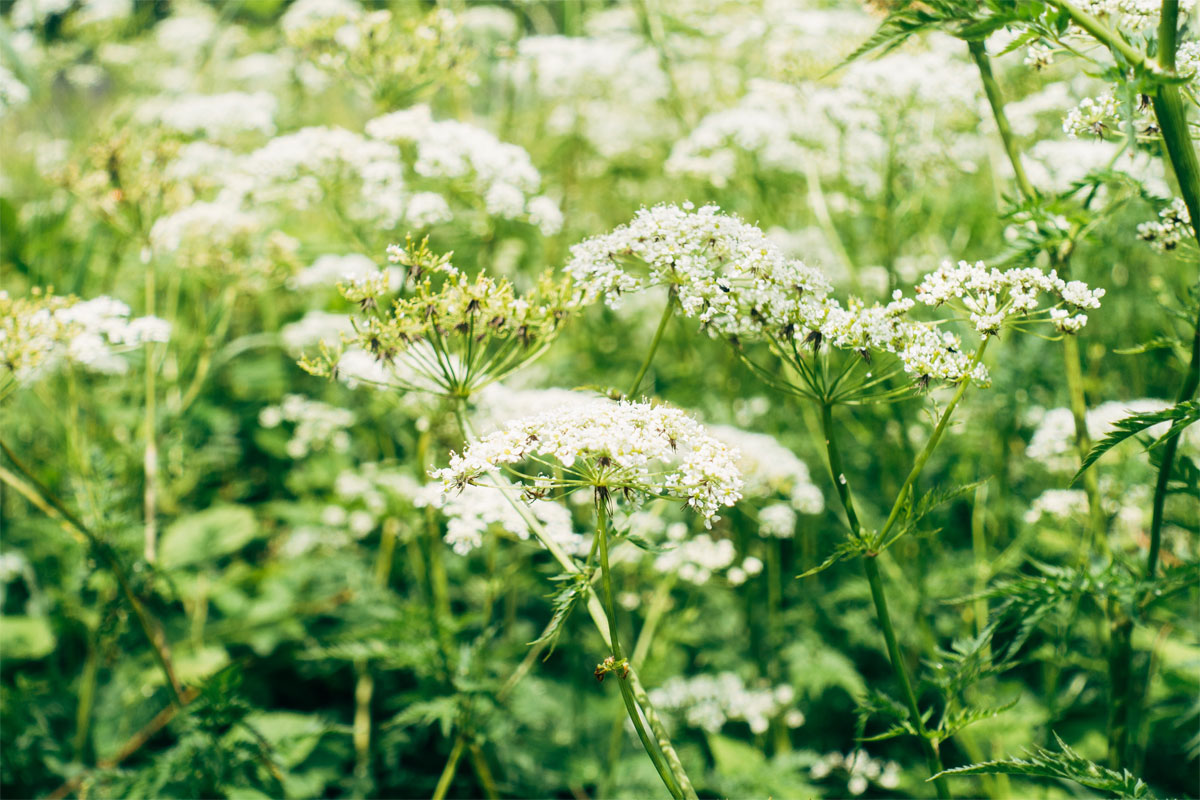
With biodiversity and rewilding being at the tips of the industries tongues at the minute, we thought it would be best to share our top 5 native plants that we have been using in our garden design plans. I believe that native plants should be a staple in everyone’s planting palettes.
1. Achillea millefolium
Known as the common yarrow, this perennial possesses aromatic green leaves with stunning structural flat headed flowers which float above the stems. The Yarrow is an excellent specimen for attracting bees and other forms of wildlife into your garden design. Personally, I like to combine my Achillea millefolium with ornamental grasses of which I will be mentioning later within the blog.
2. Acer campestre
I love the adage “The best time to plant a tree was 20 years ago. The second best time is now” and how true that is. I believe that every knew garden design and landscape should feature trees, and more importantly UK native trees.
Growing and living for up to 350 years, the field maple has dark green shiny, five lobed leaves that famously fade into a rich golden yellow in autumn before falling during late autumn and winter. The flowers grow in small clusters that tinge in yellow and green in a cup shape form. What I find most interesting about the flowers on the Acer campestre is that the flowers feature both female and male reproductive parts meaning that they are hermaphrodite!
After the tree has been pollinated, large winged flowers are formed which are only dispersed by the wind.
Oh, and this pollution fighting tree can also make syrup!
3. Cornus sanguinea
As a UK native shrub, it doesn’t get much better than the all rounder Cornus sanguinea. In the wild the broadleaf shrub can be usually found growing amongst the woodland fringes and in Southern England, throughout our hedgerows.
Like the Acer campestre, the Dogwood’s flowers are hermaphrodite and flower a beautiful creamy white in August and September. The show piece of any variety of Cornus is the vibrant, beacon like leafless stems during the winter months.
4. Deschampsia cespitosa ‘Goldtau’
Thriving in sun or partial shade, this is the ideal ornamental grass to be included in your garden design plating palette especially when planted in drifts. What I love about this plant is how versatile the species is as well as it being evergreen.
This plant, with its reddish-brown flower spikes will begin to appear in early to late summer and will continue to feature well into the autumnal months. Although these aren’t native species, but the Deschampsia will look stunning when planted amongst Dictamnus albus, Scutellaria incana, Tricyrtis formosana and Verbena bonariensis.
5. Molinia ‘Overdam’
Sharing similarities to the Deschampisa and Calamgrostis varieties in texture and feel, the ‘Overdam’ is a deciduous clump forming with green leaves turning yellow/orange in the autumnal months. The plant will flower with brown flower panicles during the summer and into the autumn.
One of the key features of this plant, and why these types are so commonly used within our garden designs is due to the winter silhouettes that it provides the garden, especially when we have a frost. With this plant growing up to 60cm high and 40cm wide, it is on the smaller sides of grasses which will make it perfect for your small gardens.
Like most grasses, it is best to be planted in drifts as well as within combinations of flowering perennials.
This concludes our list of top 5 native plants to use in garden design, however there are so many more UK native plants that you are able to use throughout your designs out there! These are just our top 5 but what are yours?


